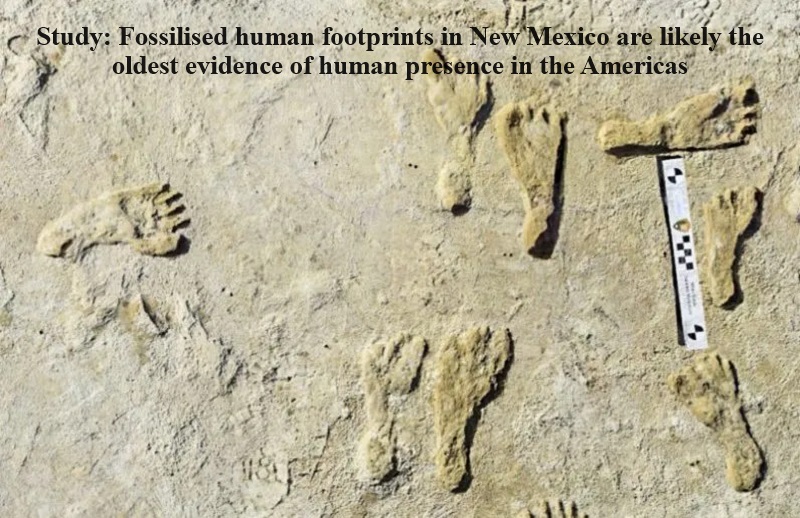
A recent research study has verified that fossilized human footprints found in New Mexico are likely the oldest direct evidence of human presence in the Americas, challenging previously held archaeological beliefs.
The footprints were discovered on the outskirts of an ancient lakebed in White Sands National Park and have been dated to approximately 21,000 to 23,000 years ago, as revealed in research published in the journal Science.
The estimated age of these footprints was initially reported in Science in 2021, but some researchers raised concerns regarding the dating methods employed. There were questions about the possibility that seeds from aquatic plants used for dating might have absorbed ancient carbon from the lake, potentially resulting in inaccurate radiocarbon dating outcomes.
This recent study presents two additional lines of evidence supporting the older date range. It utilizes two distinct materials found at the site: ancient conifer pollen and quartz grains. These materials help strengthen the argument for the footprints’ older age.
The reported age of these footprints challenges the conventional belief that humans did not arrive in the Americas until just a few thousand years before the Bering land bridge between Russia and Alaska was submerged due to rising sea levels, which is believed to have occurred around 15,000 years ago. This discovery has significant implications for our understanding of human migration patterns.
The study has generated considerable interest among archaeologists because it sheds new light on the history of human presence in the Americas. Ancient footprints provide a unique snapshot of a moment in time, and the footprints in White Sands leave no doubt about their human origin. While other archaeological sites in the Americas suggest similar date ranges, this discovery in White Sands is considered to provide undeniable evidence of early human presence in the region.

Post Your Comments